Catalyst and Auxiliary
The catalyst can change the reaction rate in the chemical reaction, and the composition and the quality of the catalyst can be kept constant after the reaction. The catalyst that accelerates the reaction is called the positive catalyst, slows down called Negative Catalyst or slow agent. It said catalyst is a positive catalyst for the general correction. This kind of catalyst in the industry, especially the organic chemical industry used more, and has great significance, Such as sulfuric acid prepared by contacting, ammonia, hydrolysis of the ester and polysaccharide, Oil Hydrogenation, etc. Commonly used catalysts are mainly metal, metal oxide and inorganic acid. If the catalyst is solid, the substance of the reaction is gas, to form a multi-phase catalytic reaction, this catalyst, sometimes called catalyst or contact agent. The catalyst is generally selective, it can only make a reaction or a certain type of reaction to speed up. But some reaction can be used for a variety of catalysts, such as the hydrogenation reaction can often be platinum, palladium, nickel, should be carefully chosen. In the catalytic reaction, the catalyst is often added cocatalyst known to enhance catalytic action of the catalyst. For example, iron is a catalyst in ammonia industry, adding a small amount of potassium and aluminum can enhance the catalytic effect of iron. The composition and weight of the catalyst and cocatalyst cannot change before and after the reaction. All of the above are inorganic catalysts. The enzyme is a protein, is very important organic catalyst.
There are many kinds of catalyst, catalyst and reaction system according to the phase of the classification, there are two types of homogeneous and heterogeneous catalysts. Heterogeneous catalysts most widely used, there are 3 kinds of gas, liquid and solid state, the variety and application of solid catalyst. The solid catalyst, which is made of metal (nickel, platinum, palladium, chromium, cobalt, titanium, vanadium, etc.) or metal oxide (copper oxide, vanadium pentoxide, lead oxide), is dispersed and deposited on the carrier in order to obtain a good dispersion effect and increase the specific surface area. The catalyst requires reliable activity, stability, selectivity, long working life, not easy to poisoning and over-burning, easy to regenerate. In order to improve the catalytic efficiency, the pure metal catalysts are made into alloy catalysts (such as nickel aluminium alloy) and composite catalysts (ZieglerNatta). The composite catalyst is composed of main catalyst and co-catalyst. In the new efficient catalysts also add other components. The production and development of high efficiency catalyst have promoted the development of polymer materials, and produced much polymer function and structure material ,which is new generation of high performance and high added value.
With the extensive application of catalyst and a number of new catalysts, we can make a lot of new chemical reactions to achieve industrialization, in order to provide an increasing number of chemical products; also can make some of the original chemical reaction conditions have been improved, in order to improve the production efficiency and product quality, make full use of resources. The important subject in the field of modern chemistry and chemical research is to select and develop more and better catalyst for the new generation. But the role of a catalyst is not beneficial to humans, such as combustion products of supersonic jet fuel as a catalyst can cause the stratosphere (10 to 50 km altitude) decomposition of ozone in the atmosphere, to the sun's ultraviolet absorption decreased, resulting in some areas of skin cancer patients increased. Is developing a new supersonic jet fuel, its combustion products will not become a catalyst,which will cause the ozone decomposition catalyst in the stratosphere.
Additives are added in the industrial and agricultural production, especially in the chemical production of some of the auxiliary chemicals, its role is to improve the production process, improve product quality and yield, or to give the product a unique application performance.
Additive are large class of important chemical in the production of auxiliary raw materials, they can give a special performance to product, improve use of finished products; and can accelerate the chemical reaction rate, improve product yield; they can save raw materials, improve processing efficiency. Additives are widely used in the chemical industry, especially organic synthesis, synthetic material processing and petroleum refining, pesticide, medicine, dye, paint and other industrial sectors. Additives can be divided into synthesized additives and processing additives. Synthetic additives are used in monomer synthesis and polymerization of a variety of auxiliary agents in resin, fiber, rubber, etc. They include catalysts, initiators, solvents, dispersants, emulsifiers, polymerization inhibitors, regulators, termination agents, etc. Processing aid refers to the auxiliary chemicals used in the manufacture of raw rubber, plastics processing, chemical fiber spinning and spinning process, including plasticizers, heat stabilizers, antioxidants, light stabilizers , flame retardants, blowing agents, lubricants, mold release agents, curing agents, accelerators, softeners, anti-scorching agents, surfactants, oils, fillers, etc. In these additives, many of them are dangerous chemicals, Such as benzoyl peroxide, azobisisobutyronitrile, hydrogen peroxide - ferrous blue, alkyl aluminum chloride, titanium and other initiators, catalysts are inflammable and explosive materials, should be required to "chemical Dangerous Goods Safety Management Regulations", for storage, transportation, operation and use.
- Chemical Name:Polyethylene glycol di-p-toluenesulfonate, M.W. 8,000
- CAS:
- MF:
- Structure:

- Chemical Name:TRIETHYLENE GLYCOL MONOHEXADECYL ETHER*
- CAS:4484-59-7
- MF:C22H46O4
- Structure:

- Chemical Name:CUCURBIT(8)URIL
- CAS:259886-51-6
- MF:C48H48N32O16
- Structure:

- Chemical Name:POLY(ISOBUTYL VINYL ETHER)
- CAS:9003-44-5
- MF:C6H12O
- Chemical Name:POLYETHYLENE GLYCOL(RG)
- CAS:
- MF:
- Structure:
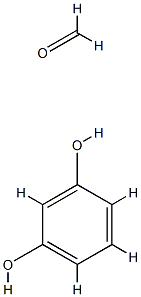
- Chemical Name:RESORCINOL-FORMALDEHYDE RESIN
- CAS:24969-11-7
- MF:(C6H6O2.CH2O)x
- Structure:

- Chemical Name:ACRYLONITRILE/BUTADIENE COPOLYMER
- CAS:9003-18-3
- MF:C7H9N
- Structure:
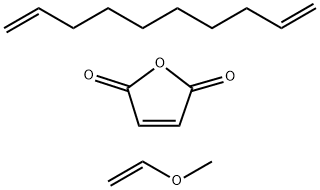
- Chemical Name:POLY(METHYL VINYL ETHER-ALT-MALEIC ANHYDRIDE), CROSS-LINKED WITH 1,9-DECADIENE
- CAS:136392-67-1
- MF:C17H26O4
- Structure:
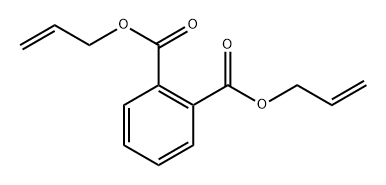
- Chemical Name:POLY(DIALLYL PHTHALATE)
- CAS:25053-15-0
- MF:C14H14O4
- Structure:
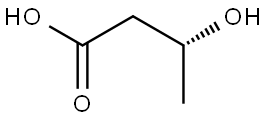
- Chemical Name:BIOPOL
- CAS:29435-48-1
- MF:(C4H8O3)x
- Structure:
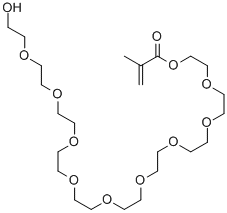
- Chemical Name:POLY(ETHYLENE GLYCOL) (N) MONOMETHACRYLATE
- CAS:25736-86-1
- MF:C24H46O12
- Chemical Name:Antioxidant 245
- CAS:
- MF:
- Chemical Name:Fluorescent brightener OB-C
- CAS:
- MF:
- Structure:
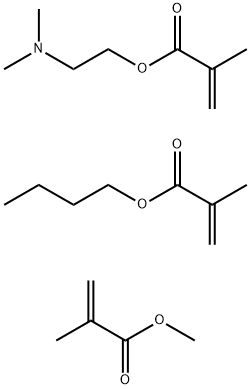
- Chemical Name:2-Propenoic acid, 2-methyl-, butyl ester, polymer with 2-(dimethylamino)ethyl 2-methyl-2-propenoate and methyl 2-methyl-2-propenoate
- CAS:24938-16-7
- MF:C21H37NO6
- Structure:
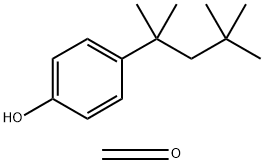
- Chemical Name:Formaldehyde, polymer with 4-(1,1,3,3-tetramethylbutyl)phenol
- CAS:26678-93-3
- MF:C15H24O2
- Chemical Name:Fluorescent brightener RKH
- CAS:
- MF:
- Chemical Name:TS-1
- CAS:
- MF:
- Chemical Name:Liquid Terpene Resin
- CAS:
- MF:
- Structure:
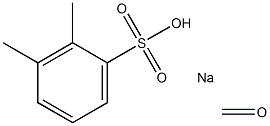
- Chemical Name:Benzenesulfonic acid, dimethyl-, polymer with formaldehyde, sodium salt
- CAS:70788-40-8
- MF:C9H12NaO4S
- Chemical Name:Hydrogenated Polydecene
- CAS:68037-01-4
- MF:[CH2CH[(CH2)7CH3]]n
- Structure:
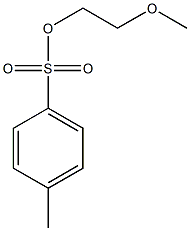
- Chemical Name:Polyethylene glycol monomethyl ether tosylate
- CAS:58320-73-3
- MF:C10H14O4S
- Chemical Name:Poly(ethyl glycol) Bis(α-broMoisobutyrate) (PEGEBiB)
- CAS:
- MF:
- Chemical Name:4-ArM poly(ethylene glycol) acrylate
- CAS:
- MF:
- Chemical Name:4-arM Poly(ethylene glycol) carboxylic acid
- CAS:
- MF:
- Chemical Name:Novel 2-arM Methoxypoly(ethylene glycol) azide
- CAS:
- MF:
- Chemical Name:Novel 2-arM Methoxypoly(ethylene glycol) Methacrylate
- CAS:
- MF:
- Chemical Name:Y-shape poly(ethylene glycol) thiol
- CAS:
- MF:
- Chemical Name:α,ω-DiMercapto poly(ethylene glycol)
- CAS:
- MF:
- Chemical Name:α-Azido-ω-hydroxyl poly(ethylene glycol)
- CAS:
- MF:
- Chemical Name:α-ForMyl-ω-Mercapto poly(ethylene glycol)
- CAS:
- MF:
- Chemical Name:α-Methacryloyl-ω-aMino poly(ethylene glycol)
- CAS:
- MF:
- Chemical Name:Poly(ethylene glycol) graft acrylate
- CAS:
- MF:
- Chemical Name:PEG derivative
- CAS:
- MF:
- Structure:

- Chemical Name:POLY(OCTADECYL METHACRYLATE)
- CAS:25639-21-8
- MF:C22H42O2
- Structure:

- Chemical Name:TRI(PROPYLENE GLYCOL) PROPYL ETHER
- CAS:96077-04-2
- MF:C12H26O4
- Chemical Name:AMBERLITE(R) IRA-35
- CAS:76930-03-5
- MF:
- Structure:

- Chemical Name:Fluorescent brightener 121
- CAS:12224-11-2
- MF:C15H14ClN3O2S
- Chemical Name:Polyethylene glycol 1800
- CAS:
- MF:
- Chemical Name:Polyethylene glycol 15000
- CAS:
- MF:
- Chemical Name:Polyethylen glycol 1000
- CAS:
- MF:HOCH2(CH2OCH2)nCH2OH
- Structure:

- Chemical Name:tetraoctyl pyromellitate
- CAS:
- MF:C42H70O8
- Structure:

- Chemical Name:N,N'-Di-2-napthyl-p-phenylene-diamine
- CAS:
- MF:C26H20N2
- Chemical Name:Release agent No.8
- CAS:
- MF:
- Chemical Name:Styrene-indene resin
- CAS:
- MF:
- Structure:
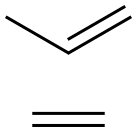
- Chemical Name:POLY(PROPYLENE-CO-ETHYLENE)
- CAS:9010-79-1
- MF:(C3H6.C2H4)x
- Chemical Name:FEMA 2501
- CAS:8023-91-4
- MF:
- Structure:
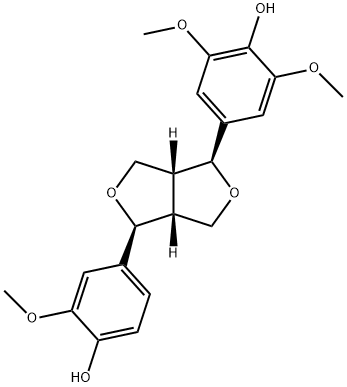
- Chemical Name:Medioresil
- CAS:40957-99-1
- MF:C21H24O7
- Chemical Name:Tinosorb S
- CAS:
- MF:
- Chemical Name:Methoxypoly(ethylene glycol) alkyne
- CAS:
- MF:
- Chemical Name:Novel 2-arM Methoxypoly(ethylene glycol) aldehyde
- CAS:
- MF:
- Chemical Name:Y-shape poly(ethylene glycol) aMine
- CAS:
- MF:
- Chemical Name:Y-shape poly(ethylene glycol) MaleiMide
- CAS:
- MF:
- Chemical Name:α-Acryloyl-ω-glycidyl poly(ethylene glycol)
- CAS:
- MF:
- Chemical Name:α-Allyl-ω-carboxyl poly(ethylene glycol)
- CAS:
- MF:
- Chemical Name:UV absorber 326
- CAS:
- MF:
- Chemical Name:Fluorescent brightener PSM
- CAS:
- MF:
- Chemical Name:Fluorescent brightener PB
- CAS:
- MF:C18H10N2O2S
- Chemical Name:Polyethylene glycol 400 dioleate
- CAS:
- MF:
- Structure:
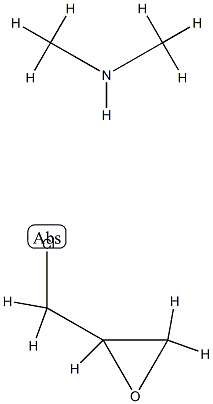
- Chemical Name:POLY(DIMETHYLAMINE-CO-EPICHLOROHYDRIN)
- CAS:25988-97-0
- MF:C5H12ClNO
- Structure:

- Chemical Name:POLYGLYCOLIDE
- CAS:26124-68-5
- MF:C2H4O3
- Structure:
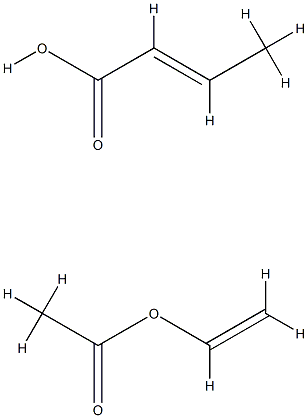
- Chemical Name:POLY(VINYL ACETATE-CO-CROTONIC ACID)
- CAS:25609-89-6
- MF:C8H12O4
- Structure:
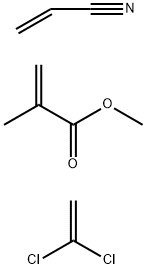
- Chemical Name:POLY(ACRYLONITRILE-CO-VINYLIDENE CHLORIDE-CO-METHYL METHACRYLATE)
- CAS:25214-39-5
- MF:C10H13Cl2NO2
- Structure:

- Chemical Name:POLY(4-METHYL-1-PENTENE)
- CAS:25068-26-2
- MF:C6H12
- Chemical Name:Trimethylolpropane propoxylate triacrylate
- CAS:53879-54-2
- MF:[H2C=CHCO2(C3H6O)nCH2]3CC2H5
- Structure:
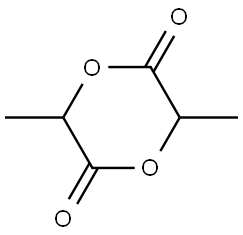
- Chemical Name:3,6-Dimethyl-1,4-dioxane-2,5-dione homopolymer
- CAS:26680-10-4
- MF:(C6H8O4)x
- Chemical Name:vinyl function,phenyl resin
- CAS:
- MF:
- Structure:

- Chemical Name:TRIMETHYLOLPROPANE ETHOXYLATE
- CAS:50586-59-9
- MF:(C2H4O)n(C2H4O)n(C2H4O)nC6H14O3
- Chemical Name:4-arM Poly(ethylene glycol) MaleiMide
- CAS:
- MF:
- Chemical Name:Methoxypoly(ethylene glycol) carboxyl acid
- CAS:
- MF:
- Chemical Name:Y-shape poly(ethylene glycol)
- CAS:
- MF:
- Chemical Name:Y-shape poly(ethylene glycol) azide
- CAS:
- MF:
- Chemical Name:α-Acryloyl-ω-Methacryloyl poly(ethylene glycol)
- CAS:
- MF:
- Chemical Name:α-Azido-ω-succiniMidyl poly(ethylene glycol)
- CAS:
- MF:
- Chemical Name:α-Carboxyl-ω-Mercapto poly(ethylene glycol)
- CAS:
- MF:
- Chemical Name:α-SucciniMidyl-ω-MaleiMidyl poly(ethylene glycol)
- CAS:
- MF:
- Chemical Name:Poly(ethylene glycol) graft carboxylic acid
- CAS:
- MF:
- Chemical Name:α-Methacryloyl-ω-Mercapto poly(ethylene glycol)
- CAS:
- MF:
- Chemical Name:HYDROXYLATED ACRYLIC RESIN
- CAS:
- MF:
- Structure:

- Chemical Name:PEG-15 COCOPOLYAMINE
- CAS:68584-77-0
- MF:(C12H27N.C6H17N3.C3H5ClO.(C2H4O)nH2O)x
- Structure:
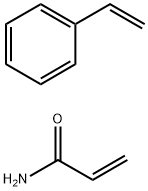
- Chemical Name:STYRENE/ACRYLAMIDE COPOLYMER
- CAS:24981-13-3
- MF:C11H13NO
- Structure:
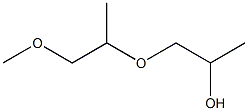
- Chemical Name:PPG-3 METHYL ETHER
- CAS:37286-64-9
- MF:C7H16O3
- Chemical Name:Caspase 2 (ICH1, Nedd2), Apoptosis Detection, Colorimetric BioAssayª
- CAS:
- MF:
- Chemical Name:Base Oil
- CAS:
- MF:
- Structure:
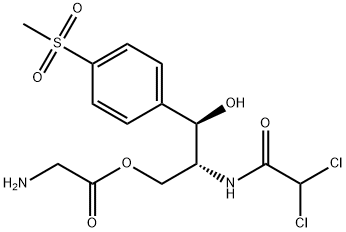
- Chemical Name:THIAMPHENICOL
- CAS:2393-92-2
- MF:C14H18Cl2N2O6S
- Chemical Name:Special solvent oil
- CAS:
- MF:
- Chemical Name:Antioxidant 2088
- CAS:
- MF:
- Chemical Name:Complex antioxidant
- CAS:
- MF:
- Chemical Name:Antioxidant SP-C
- CAS:
- MF:
- Chemical Name:Octyl-phenolic curing resin
- CAS:
- MF:
- Chemical Name:Molecular sieve ZSM-5
- CAS:
- MF:
- Chemical Name:Thermoset acrylic resin
- CAS:
- MF:
- Chemical Name:Fluorescent brightener PMB
- CAS:
- MF:
- Chemical Name:Fatty acids, C18-unsatd., dimers, reaction products with polyethylenepolyamines
- CAS:68410-23-1
- MF:
- Structure:
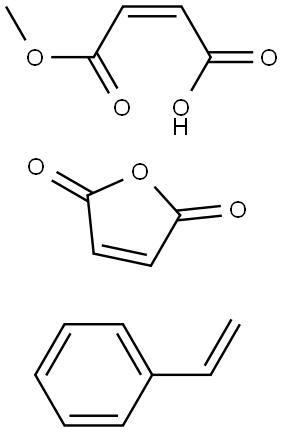
- Chemical Name:STYRENE MALEIC ANHYDRIDE COPOLYMER
- CAS:31959-78-1
- MF:(C8H8.C5H6O4.C4H2O3)x
- Chemical Name:Antioxidant ZYB215,ZYB225
- CAS:
- MF:
- Structure:
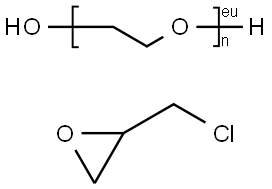
- Chemical Name:(chloromethyl)-oxiran reaction products with polyethylene glycol
- CAS:72207-80-8
- MF:(C3H5ClO.(C2H4O)nH2O)x
- Structure:
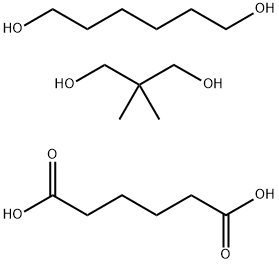
- Chemical Name:POLY(1,6-HEXANEDIOL/NEOPENTYL GLYCOL-ALT-ADIPIC ACID)
- CAS:25214-14-6
- MF:C17H36O8
- Structure:

- Chemical Name:Polyethylene glycol mono(2-ethylhexyl) ether
- CAS:26468-86-0
- MF:C24H50O9
- Structure:
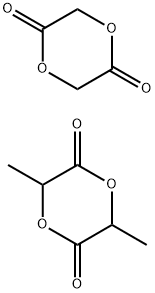
- Chemical Name:POLY(D,L-LACTIDE-CO-GLYCOLIDE)
- CAS:26780-50-7
- MF:(C6H8O4.C4H4O4)x
- Structure:
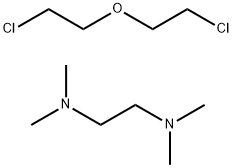
- Chemical Name:Mayosperse 60
- CAS:31075-24-8
- MF:C10H24Cl2N2O